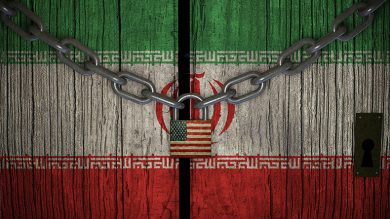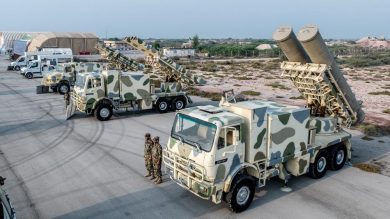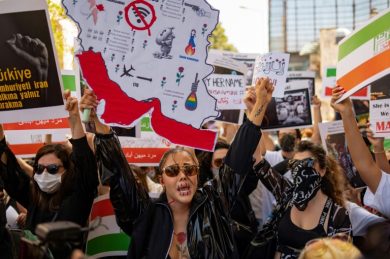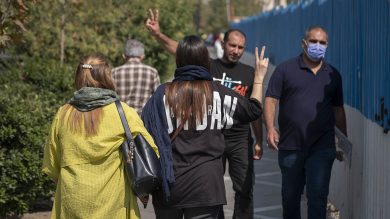The Islamic Republic of Iran has long enforced a strict gender hierarchy rooted in religious fundamentalism and authoritarian control. At the core of this system lies the Islamic Revolutionary Guard Corps (IRGC)—the state’s most powerful military, economic, and ideological institution. Beyond its conventional and covert military operations, the IRGC plays a central role in maintaining what many human rights advocates describe as gender apartheid.
From mandatory hijab enforcement to legal discrimination in marriage, custody, employment, and public behavior, women in Iran face a deeply institutionalized system of repression. These laws, often justified under the guise of religious piety and “moral order,” are violently enforced by IRGC-controlled institutions, including the Basij militia, morality police, and intelligence arms.
This article provides a comprehensive analysis of Iran’s gender-based legal system, the IRGC’s role in enforcing it, and the global calls to recognize and dismantle this apartheid structure.
1. What Is Gender Apartheid?
Gender apartheid refers to a system of governance or laws that systematically segregates, restricts, or disadvantages individuals based on their gender. This includes:
• Denial of equal rights
• Institutionalized discrimination
• Enforced gender roles
• Use of violence to uphold gender-based laws
In Iran, gender apartheid is codified in law and maintained by state-backed force. Women are second-class citizens by design, and their lives are subject to surveillance, control, and punishment by state authorities—primarily the IRGC and its affiliated forces.
2. Legal Framework: The Foundations of Discrimination
A. The Constitution and Sharia Law
Iran’s constitution incorporates Shi’a Islamic law (Sharia) as its legal foundation. Article 4 mandates that all laws must be based on Islamic criteria, leading to the embedding of patriarchal and gender-discriminatory provisions across Iran’s legal system.
Key examples include:
• Mandatory Hijab (Article 638 of the Islamic Penal Code): Punishes women who do not wear hijab with imprisonment or fines.
• Personal Status Laws: Men can divorce freely and have up to four wives; women require the husband’s permission to work or travel.
• Testimony in Court: A woman’s testimony is legally worth half of a man’s.
• Inheritance: Women inherit half as much as male heirs.
• Child Custody: Mothers often lose custody when children reach a certain age, even in cases of abuse.
3. The IRGC: Guardian of Patriarchy
The IRGC was founded in 1979 to protect the Islamic Republic and enforce its ideological purity. This includes preserving Iran’s gender-based legal order.
A. The Morality Police and Basij
The IRGC operates and funds the Gasht-e Ershad (Guidance Patrols) and the Basij militia, both tasked with:
• Policing women’s dress and behavior in public
• Arresting violators of hijab laws
• Suppressing protests against gender discrimination
These units are known for violent crackdowns and have been widely condemned for sexual violence, torture, and harassment of women in detention.
B. Surveillance and Arrests
The IRGC’s intelligence branch monitors:
• Social media for images of unveiled women
• Women’s rights activists, journalists, and protest organizers
• Online campaigns like #MyStealthyFreedom
Thousands of women have been arrested, interrogated, and imprisoned under charges such as “promoting corruption and indecency” or “propaganda against the state.”
4. Case Studies: Women Targeted by the Regime
A. Mahsa Amini
In 2022, 22-year-old Mahsa Amini was arrested by morality police in Tehran for “improper hijab” and died in custody. Her death sparked nationwide protests under the slogan “Women, Life, Freedom”—a direct challenge to gender apartheid and the IRGC’s violent enforcement of it.
B. Narges Mohammadi
Human rights activist and Nobel Peace Prize laureate Narges Mohammadi has been arrested multiple times for speaking against mandatory hijab and gender segregation. She remains imprisoned in Evin prison for her advocacy.
C. Nasrin Sotoudeh
Prominent lawyer Nasrin Sotoudeh has defended many women imprisoned for removing their hijabs. She was sentenced to 38 years in prison and 148 lashes, highlighting the regime’s brutality toward those who defy gender apartheid laws.
5. Education, Work, and Public Life Under Restriction
A. Higher Education
Although women make up a large portion of university students, they face quotas, bans in certain fields, and gender segregation in classrooms and dorms.
B. Employment Discrimination
Women need husband or male guardian permission to work in many sectors. Discriminatory laws and practices result in wage gaps, job insecurity, and limited career advancement.
C. Public Space and Mobility
• Women are banned from attending men’s sporting events.
• Women cannot travel abroad without male guardian approval.
• Cultural events, including music and art, are strictly censored when women are involved.
6. The IRGC and Violence Against Women Protesters
During protests, the IRGC plays a leading role in violent crackdowns, including:
• Live ammunition and pellet guns used against protesters.
• Mass arrests of female students, teachers, and workers.
• Sexual assault and rape in custody, as documented by multiple human rights organizations.
These tactics are intended not just to suppress dissent, but to intimidate women into compliance.
7. International Responses and Growing Pressure
Human rights groups like Amnesty International, Human Rights Watch, and UN Special Rapporteurs have condemned Iran’s gender apartheid, calling for:
• Targeted sanctions against IRGC officials.
• International legal investigations into crimes against women.
• Global recognition of gender apartheid as a human rights violation.
Some countries, including the United States, have already designated the IRGC as a terrorist organization—a move activists hope will be adopted more broadly in response to its treatment of women.
8. The Call to Recognize Gender Apartheid as a Crime
Legal experts and feminist organizations worldwide are urging the UN and international courts to:
• Recognize gender apartheid as a crime against humanity.
• Include it in future international legal frameworks, much like racial apartheid was addressed post-Apartheid South Africa.
• Create mechanisms to protect women under oppressive regimes.
9. Iranian Women Are Fighting Back
Despite intense repression, Iranian women are not silent. They are:
• Organizing underground networks of resistance
• Documenting abuses and sharing them globally
• Leading protests, both online and in the streets
Movements like “My Stealthy Freedom”, “White Wednesdays”, and “Girls of Revolution Street” have become global symbols of resistance.
Conclusion
The system of gender apartheid in Iran, enforced and maintained by the IRGC, is a gross violation of human rights. The regime’s policies go far beyond modesty laws—they represent a deliberate effort to control half the population through surveillance, violence, and fear.
As Iranian women continue to resist, the international community must do more than watch. It must act—through sanctions, legal accountability, and diplomatic pressure—to dismantle a system that violates the most fundamental human rights.
Join Our Newsletter!
Stay informed with the latest updates, news, and ways to take action in the fight for justice and global security. Sign up now to get updates delivered straight to your inbox!





